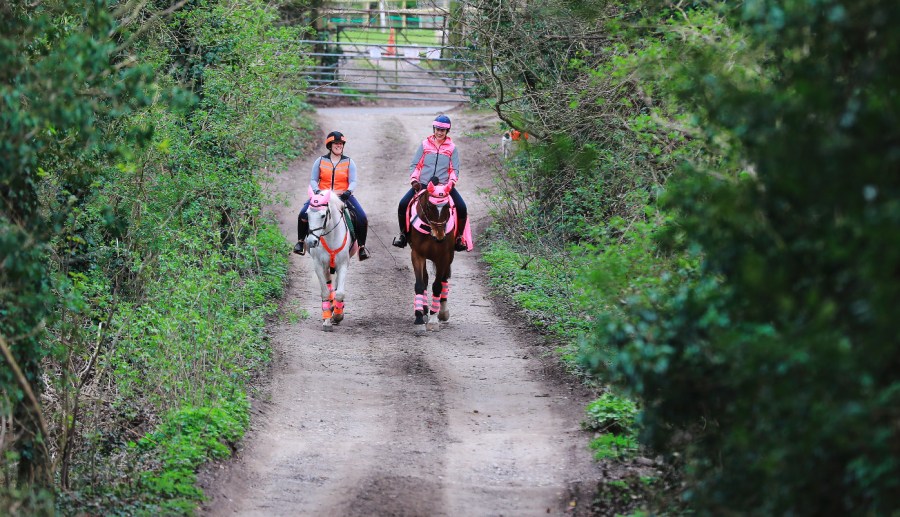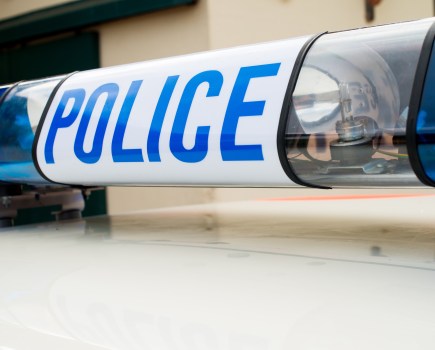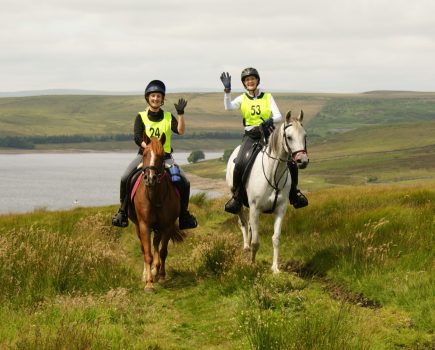In partnership with Equisafety…
If, like us, long sunny days mean you’re putting in as many hacking miles as you can, you and your horse’s safety will be at the forefront of your mind.
We all know that riding isn’t without risk and hacking on the road can be particularly hazardous. We’ve put together the following advice to help you stay safe and in turn feel more confident so that you get maximum enjoyment out of your rides.
Even if you’re a seasoned #Hack1000Miles challenger, there may be a few things here that you haven’t thought of before…
1 Make sure you can be seen
Wearing hi-vis — both you and your horse — should be considered an absolute must when riding on the roads. Being bright and visible will help motorists to see you earlier, so that they have time to slow down and give you space, helping you and your horse to stay safe.
Hi-vis isn’t just for road riding either. It’s important to be seen when you’re on a bridleway, in a forestry or exploring parkland. In the event of a fall, the air ambulance is more likely to spot you and we’ve also had reports that low-flying army helicopters have steered away from horse riders after spotting them from the sky.
There’s plenty of choice when it comes to hi-vis products — check out the range from our #Hack1000Miles sponsor, Equisafety, here.
A little hi-vis goes a long way, so be sure to put some on and the more you wear the merrier. It doesn’t cost the earth and it could save your life — it’s a simple as that.
If you’re currently hacking without hi-vis please make a change today — hi-vis matters.
2 Protect yourself from injury
Even the most laidback horses can be unpredictable: perhaps there’s an unexpected bag flapping in the hedge or another road user does something that causes your horse to spook. With this in mind, it’s a very good idea to wear a body protector and/or air jacket to help protect you in the event of a fall, particularly on a hard, unforgiving surface like a road.
We shouldn’t need to say that always wearing a properly fastened riding hat when you’re in the saddle is a must. There’s no excuse — you’ve only got one head!
3 Tell a friend or family member
Always tell someone where you’re going and give an estimated time of return. If something happens, you can be confident they’ll come looking for you. Just remember to let that person know if you’re running late so they don’t worry.
Don’t rely on always having mobile phone signal when you need it most, though. Some networks drop out!
4 Install a riding app
For added peace of mind, consider installing an app like What3Words or Horse Rider SOS’ app on your phone. What3Words provides a code that you can share with emergency services to identify your exact location. The Horse Rider SOS’ app monitors your movements as you ride and, in the event of a fall, the app will enter “Alert mode’ and kick off a rescue process. Check out our round up of handy hacking apps.
5 Safety in numbers
Buddy up with others on your yard and hack out in pairs or small groups. This can make for a more enjoyable ride as well as a safer one. If you lack confidence or your horse is young/green, hacking out with friends will help your confidence levels grow. Confidence is a key part of safe hacking; if you’re scared or nervous, you’re less likely to stay calm in the event of something unexpected occurring.
6 Stay alert
It’s lovely to hack out with friends and point 5 (above) explains why it’s such a good idea. However, it’s vital that you stay alert as you ride — especially on the road — so take care not to be distracted by chatting with your friends. Listen out for approaching traffic and look out for other signs of other obstacles you may need to deal with, such as cyclists or loose dogs.
Staying alert plays an important part in being considerate (see point 7, below) to other road users. It’s also essential for your safety, so that you see and hear potentially problematic things before they become a problem.
7 Be courteous
We all know that not every driver or road user is patient and friendly when they see horses on the road. However, for those who are, it’s important that you are considerate and courteous in return.
Always thank drivers who pass slow and wide. Prefer not to take a hand of the reins to say thank you? Then a clear nod is acceptable. In both cases, make sure you do it when the driver can see you.
A thanked driver is more likely to pass the next horse they see on the road safely too, so by being courteous, you’re doing your bit to secure fellow riders’ safety as well.
If you’re on a narrow road and a car needs to pass, find a gate way or part of the road wide enough for your horse to pull into and allow the car to pass. The sooner you can move out of the way the better — don’t dawdle!
8 Be honest about your ability
If your horse is new, green or simply inexperienced on the roads, be sure you’re ready to hit the roads before you do. This might mean riding out with others (see point 5) and tucking your horse on the inside of a more experienced horse.
It’s also a good idea to have a few lessons and ensure all the basics are in place so that you are confident that your horse listens and responds to your aids. Can you maintain control of your horse and do you know what to do in the event of a spook? If not, ask your trainer for some advice to ensure the basics are in place before you hack out — it will give you and your horse confidence.
9 Make sure you’re insured
As a minimum, every rider should have third party insurance so that you’re covered in the event that you or your horse cause damage to another person or their property while hacking. Personal accident cover is a good idea too, in case you are injured while riding.
Neither of these have to be very expensive and can usually be paid per month to make it really affordable. Some club and society memberships include this cover too. Always read the small print to make sure you know exactly what you are covered for.
10 Do your hacking admin
Plan you’re route so that you know where you’re going and won’t get lost. Make sure your mobile phone is charged and working, and important numbers — such as your yard owner and vet — are saved in there in case you need them.
It’s a good idea to have an emergency number saved on your phone or written on a tag attached to your clothing which can be accessed should you fall off and be found unconscious. A tag with your number (and/or an emergency number) attached to your horse is also useful in the event that you become separated. We’re thinking worst case here so don’t panic — but it is better to be safe than sorry.
11 Report incidents on the road
The BHS reported a rise in road incidents involving horses in 2020. The charity urges all riders to report any accident or incident on the road so that they can continue lobbying for action to help make roads safer for vulnerable road users.
If nobody knows about incidents involving horses and riders on the road, nothing can be done about it. Armed with information, it’s easier for the BHS to lobby those in power to make a change. You can report incidents here.
12 Take the BHS Ride Safe Award
Maybe you took the old riding and road safety test years ago and could do with brushing up on your skills or you’ve never taken it before. Either way, being able to ride safely on the roads and clearly communicate with drivers through correct hand signalling is essential.
The Ride Safe Award isn’t just about road riding; it covers all hacking and useful things like negotiating hazards and obstacles, and dealing with conflict or difficult situations.
This content is brought to you in partnership with Equisafety, high viz clothing for horses and riders.









